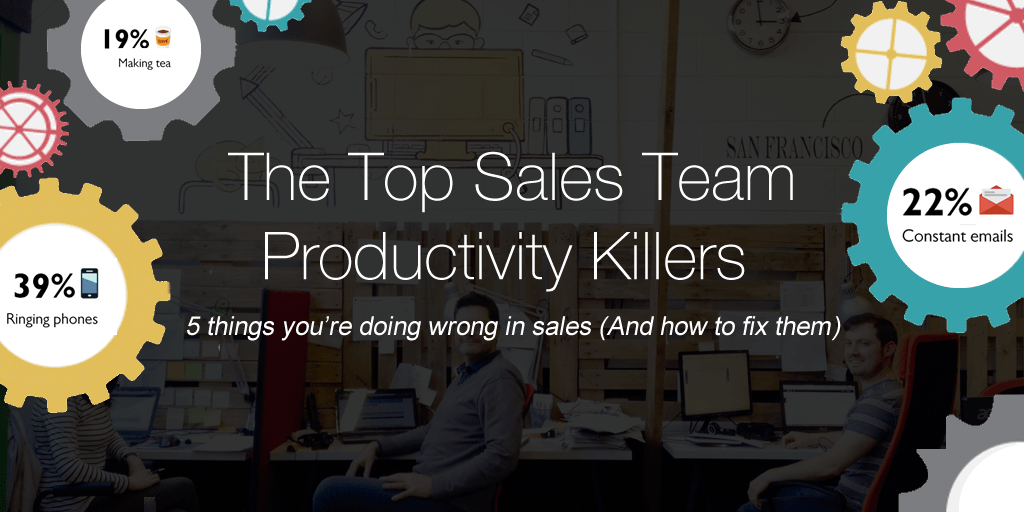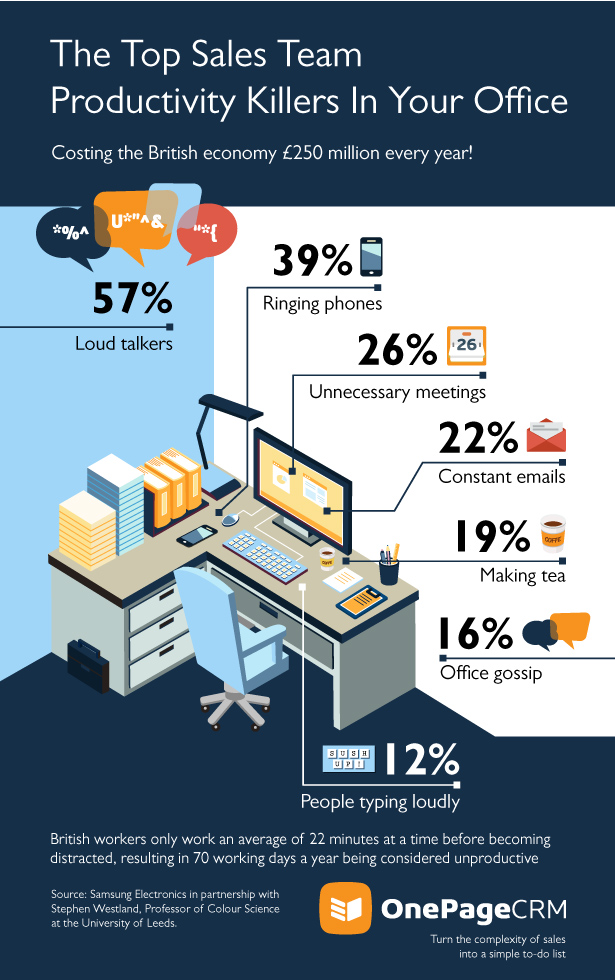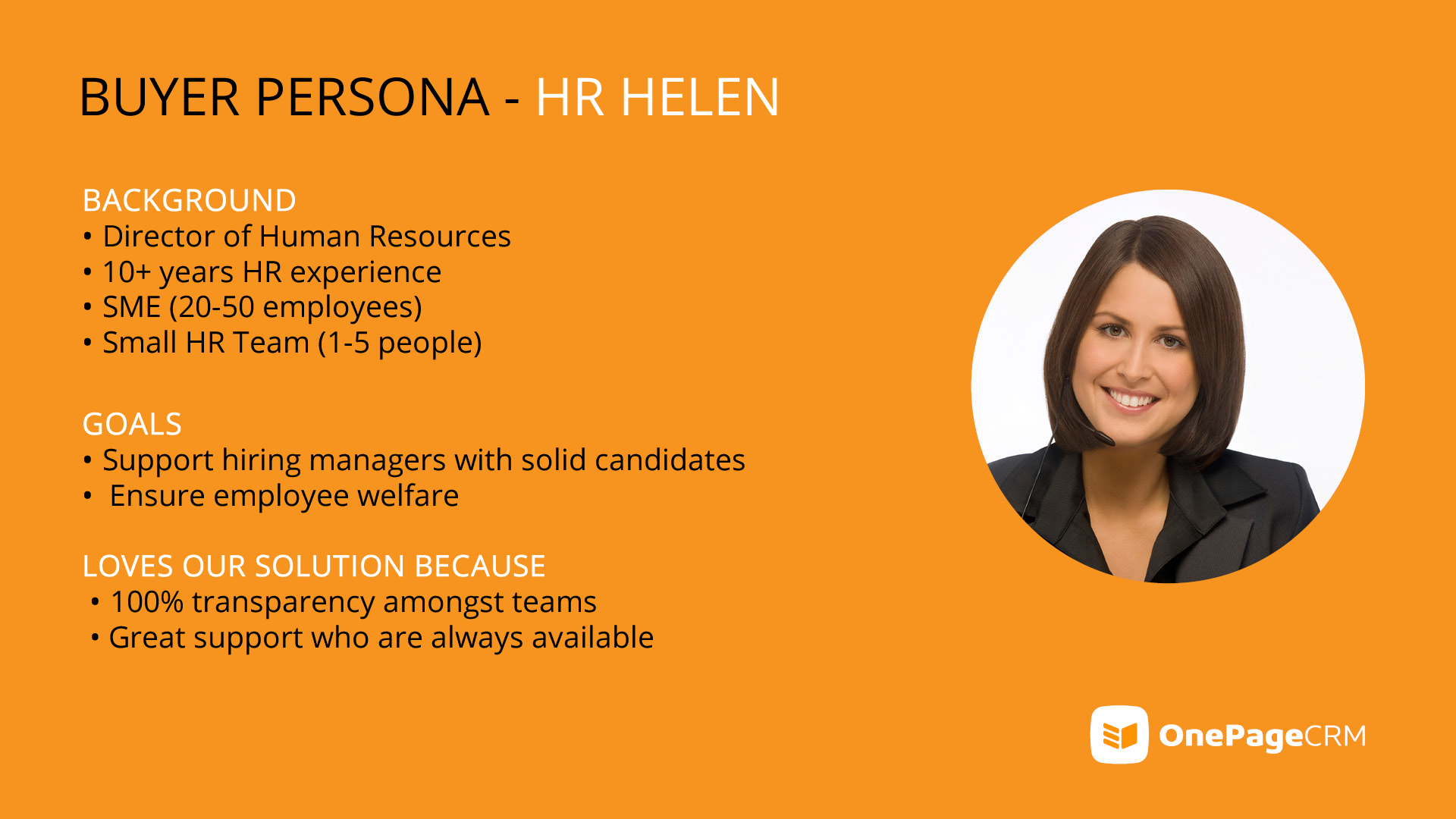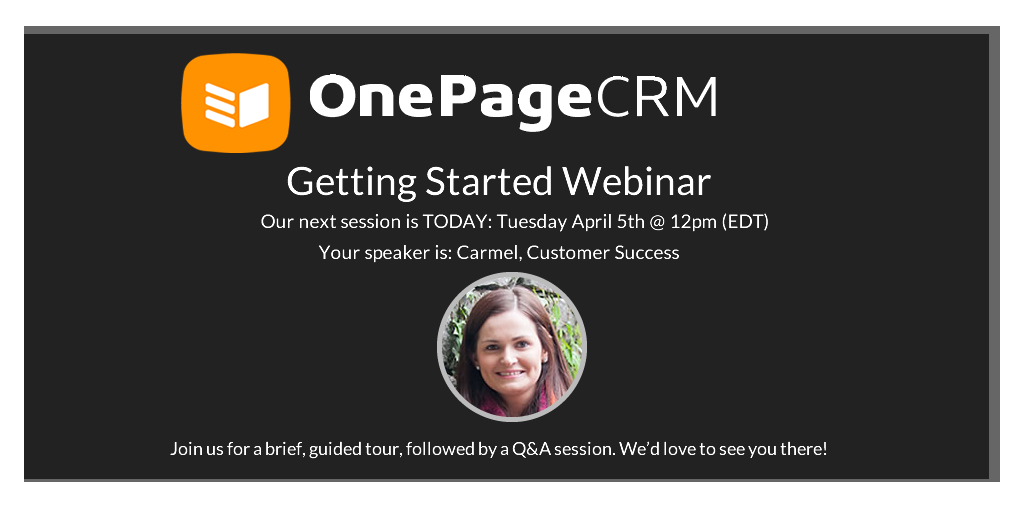
As salespeople, time is our biggest asset and yet all too often, our time seems consumed by administrative and non-selling tasks. In fact, it’s been reported that just 39% of our time is spent selling or interacting with prospects and customers. In this post, we’re looking at the five productivity-draining tasks that are keeping us from getting sales done along with our top tips for eliminating them from your workflow for good.
1. Track your workflow processes
By assessing the time you spend both on role-specific and indirect tasks, you can determine which tasks are adding productively to your workflow and those that are wasting your time. How well do you really know your sales process? How much of your day is actually spent interacting with customers and selling? And much of that time is caught up in pre- and post-sales activities? You need to be able to consider these questions and qualify the time spent.
Tip: Get into the habit of recording your work processes. You’ll be surprised at what inefficiencies you can discover by jotting a few notes down in a diary at the end of each day.

2. Outsource your lead gen team
As salespeople, we’re really great at selling, so why complicate things? One of the biggest productivity killers is lumping together a mix of different responsibilities (such as raw web lead qualification, cold prospecting, closing, and account management) into one general ‘sales’ role. This creates significant inefficiencies including a lack of focus and less visibility when it comes to the ownership of tasks.
Tip: Outsource your lead gen team, for great efficiency at a fraction of the cost.
“A good rule of thumb is the 80/20 rule. When your reps, as a group, are spending more than 20% of their time on a secondary function, break out that function into a new role.”
Aaron Ross, Predictable Revenue
3. Learn to love your CRM
To close sales you need to be able to track your communications with prospects. That said, keeping effective records on all customer interactions shouldn’t monopolize hours in your day. A CRM system with sales force automation capabilities allows you to keep all your interactions with your customers and potential customers in one place, keeping you focused while replacing manual processes that would otherwise eat into your selling time.
Tip: Spend time getting to grips with the full functionality of your CRM so that you can use it to maximum advantage.
4. Identify low quality sales leads
Not every lead is going to convert to a sale. In fact, typical conversion rates from visitor to free trial in SaaS are at just 2%. Your job as a salesperson and prospector is to identify the high potentials from the time-wasters.
Use the data already available to you in your CRM to identify trends in your customer base. Look at deals closed, team sizes, and trends in the length of sales cycles. Combine this data with information from their LinkedIn profiles all use this to build a buyer persona for your ideal customer.
Tip: Creating your buyer personas is only the first step in the process. Score leads on how closely they match this buyer persona and tailor your onboarding activities accordingly.

5. Avoid individual demonstrations
You need to be thinking of your time as a commodity, where you can create economies of scale by utilizing it effectively. One-on-one consultations with clients are great for building rapport and engaging their interest, but it can often prove counter-productive if clients aren’t qualified or ready to buy.
Tip: Consider having your lead gen person or sales development representative (SDR) hold a live demonstration webinar for the key decision-makers in a prospect company. This way you won’t have to relay the same information to the various stakeholders at different stages in the funnel. Keep it brief, 30 minutes should be sufficient time to sell your system’s key features. Engage the audience with a Q&A and offer them an incentive to stay tuned, like a bonus ebook download.

The salespeople of today juggle many hats, none more so than those of you in small enterprises. We’re prospectors, we’re customer support, heck we even dabble in marketing on occasion. The real test is not to lose sight of our primary role—selling!
[sc name=”OnePageCRM trial Action Stream”]









Apart from point 2 it’s a great read
Glad you enjoyed Imran
Very good piece and helpful in redirecting our sales persons to positive and successful sales functions
Thanks Lawrence, good organisation and focus is the key to GTD in sales!
Hey Lara that was very useful. Thanks for sharing.. .
Thanks Linga, glad to hear you found it useful!
Simple things with immense effect on our sales force performance.
Thank you Laura.
weldone Laura…..I love this piece and i have to confess it eye-opening when it comes to time management.
Really practical and awesome Laura. Really thank you for sharing.
Succintly delivered….lots of meat in your piece Laura especially how to keep track of CRM and we juggling to many hats, keep it coming
Thanks for the great feedback Larry. The life of a startup… juggling many hats!